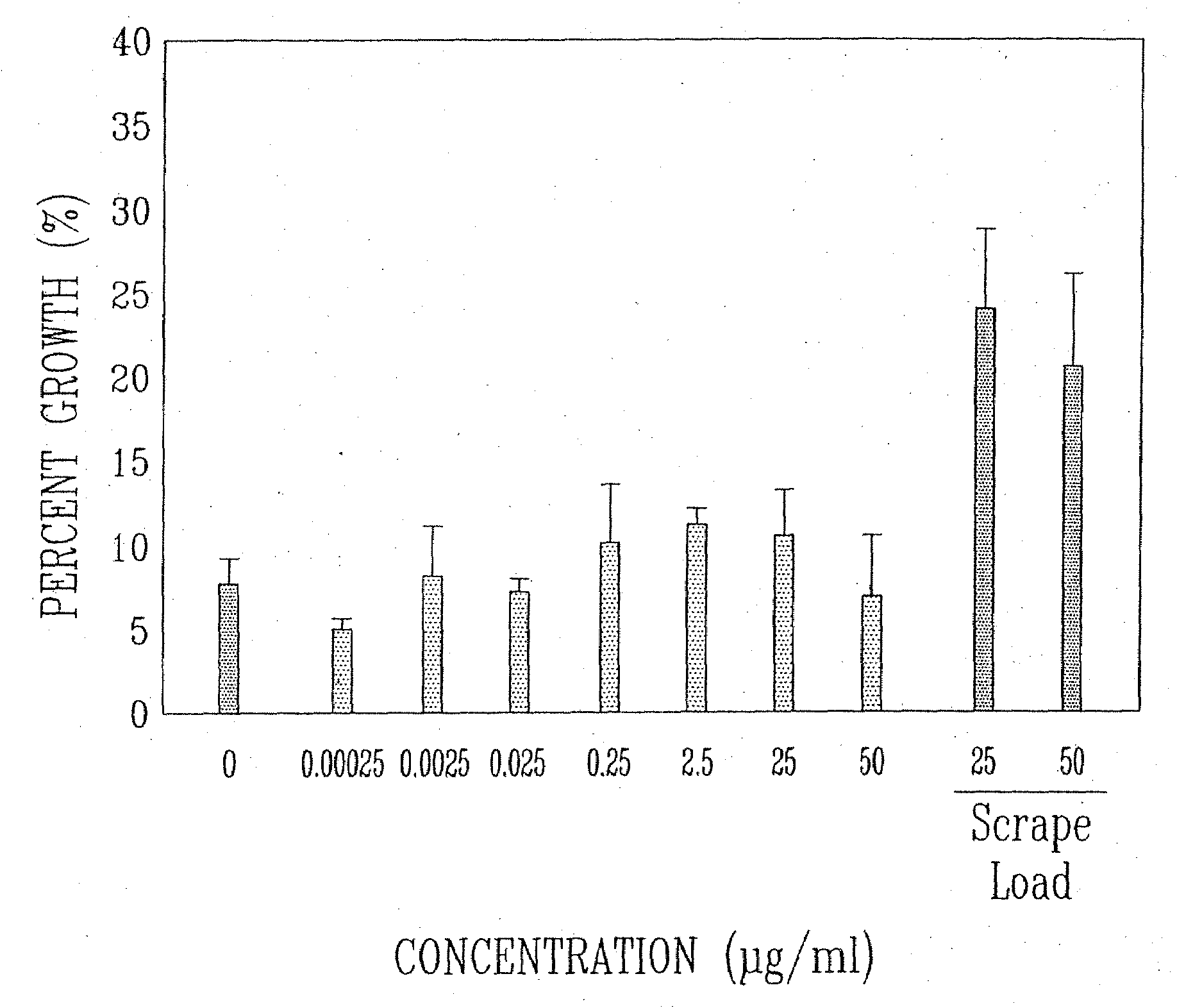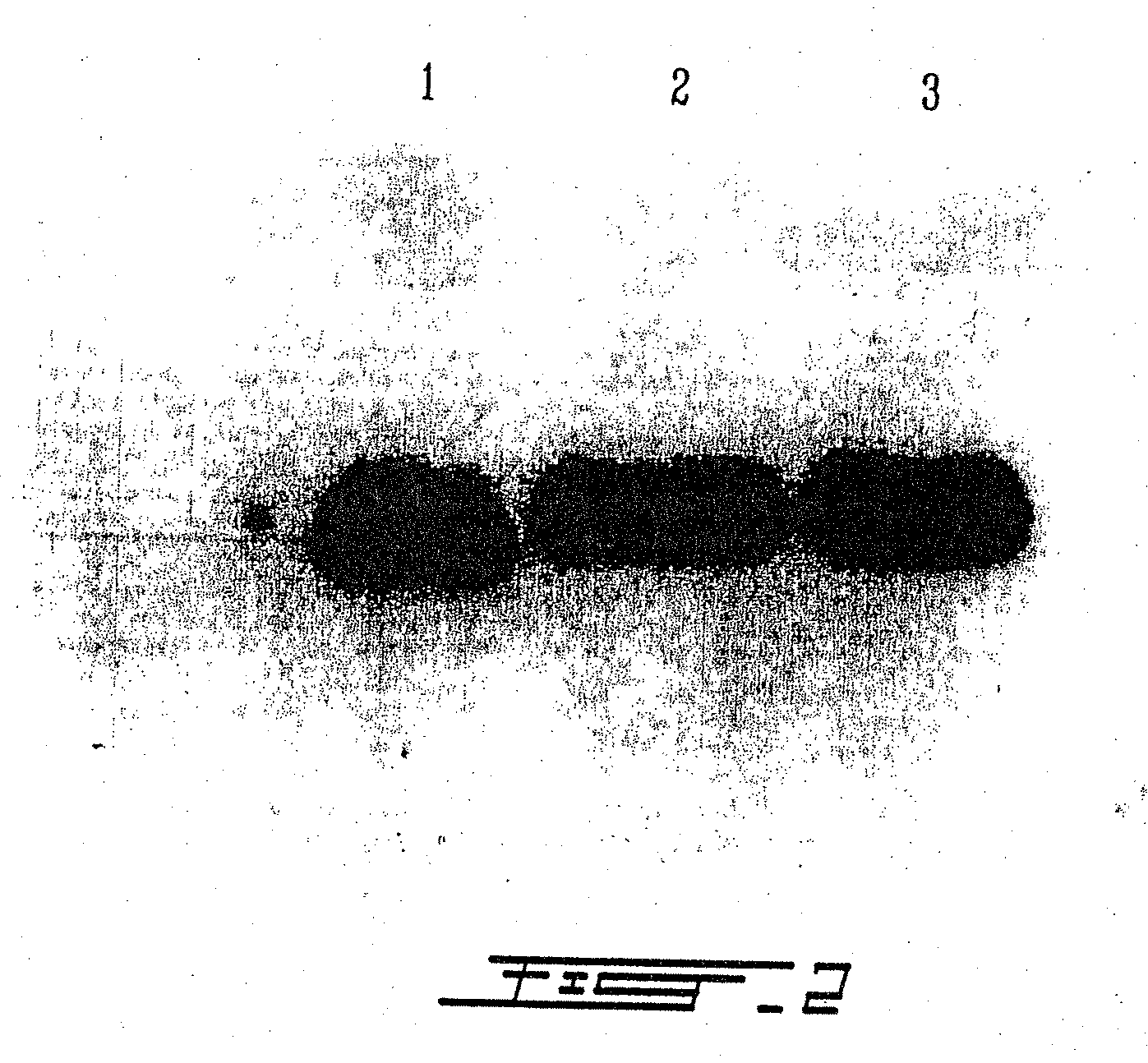Treatment of macular degeneration with ADP-ribosyl transferase fusion protein therapeutic compositions
a technology of ribosyl transferase and macular degeneration, which is applied in the field of conjugating or fusion type proteins (polypeptides), can solve the problems of permanent functional impairment, deficits associated with spinal cord injury, loss of axons that are damaged, etc., and achieve the effect of preventing or inhibiting or retarding growth
- Summary
- Abstract
- Description
- Claims
- Application Information
AI Technical Summary
Benefits of technology
Problems solved by technology
Method used
Image
Examples
example 1
DNA and Protein Sequence Details of C3APL
Nucleotide Sequence of C3APL
[0384]It has been reported that the long version of antennapedia transport sequence can enhance neurite growth (Bloch-Gallego, E., LeRoux, I.-, Joliot, A. H., Volovitch, M., Henderson, C. E., Prochiantz, A. 1993. J. Cell Biol. 120:485). Therefore, this sequence is expected to enhance neurite growth. For the sequence given below, the start site, is in the GST sequence of the plasmid (not shown). The vector with the GST sequence is commercially available and thus the entire GST sequence including the start was not sequenced. It was desired to determine only the sequence located 3′ to the thrombin cleavage site which releases C3 conjugate from the GST sequence. The GST sequence is cleaved with thrombin.
[0385]The APL transport sequence (SEQ ID NO.: 44) is as follows:
Val Met Glu Ser Arg Lys Arg Ala Arg Gln Thr Tyr 1 5 10Thr Arg Tyr Gln Thr Leu Glu Leu Glu Lys Glu Phe 15 ...
example 2
DNA and Protein Sequence Details of C3APS
[0398]Nucleotide sequence of C3APS (SEQ ID NO: 5). The start site, is in the GST sequence of the plasmid, not shown here.
ggatcctcta gagtcgacct gcaggcatgc aatgcttatt ccattaatca aaaggcttat60tcaaatactt accaggagtt tactaatatt gatcaagcaa aagcttgggg taatgctcag120tataaaaagt atggactaag caaatcagaa aaagaagcta tagtatcata tactaaaagc180gctagtgaaa taaatggaaa gctaagacaa aataagggag ttatcaatgg atttccttca240aatttaataa aacaagttga acttttagat aaatctttta ataaaatgaa gacccctgaa300aatattatgt tatttagagg cgacgaccct gcttatttag gaacagaatt tcaaaacact360cttcttaatt caaatggtac aattaataaa acggcttttg aaaaggctaa agctaagttt420ttaaataaag atagacttga atatggatat attagtactt cattaatgaa tgtctctcaa480tttgcaggaa gaccaattat tacacaattt aaagtagcaa aaggctcaaa ggcaggatat540attgacccta ttagtgcttt tcagggacaa cttgaaatgt tgcttcctag acatagtact600tatcatatag acgatatgag attgtcttct gatggtaaac aaataataat tacagcaaca660atgatgggca cagctatcaa tcctaaagaa ttccgccaga tcaagatttg gttccagaat720cgtcgcatga agtggaaga...
example 3
Method for Making the C3APLT and C3APS Proteins
[0411]C3APL (amino acid sequence: SEQ ID NO.: 4) and C3APLT (amino acid sequence; SEQ ID NO: 37) are the names given to the proteins encoded by cDNAs made by ligating the functional domain of C3 transferase and the homeobox region of the transcription factor called antennapedia (Bloch-Gallego (1993) 120: 485-492) in the following way. A cDNA encoding C3 (Dillon and Feig (1995) 256: 174-184) cloned in the plasmid vector pGEX-2T was used for the C3 portion of the chimeric protein. The stop codon at the 3′ end of the DNA was replaced with an EcoR I site by polymerase chain reaction using the primers 5′GAA TTC TTT AGG ATT GAT AGC TGT GCC 3′ (SEQ ID NO: 1) and 5′GGT GGC GAC CAT CCT CCA AAA 3′ (SEQ ID NO: 2). The PCR product was sub-cloned into a pSTBlue-1 vector (Novagen, city), then cloned into a pGEX-4T vector using BamH I and Not I restriction site. This vector was called pGEX-4T / C3. The pGEX-4T vector has a 5′ glutathione S transferase (...
PUM
 Login to View More
Login to View More Abstract
Description
Claims
Application Information
 Login to View More
Login to View More - R&D
- Intellectual Property
- Life Sciences
- Materials
- Tech Scout
- Unparalleled Data Quality
- Higher Quality Content
- 60% Fewer Hallucinations
Browse by: Latest US Patents, China's latest patents, Technical Efficacy Thesaurus, Application Domain, Technology Topic, Popular Technical Reports.
© 2025 PatSnap. All rights reserved.Legal|Privacy policy|Modern Slavery Act Transparency Statement|Sitemap|About US| Contact US: help@patsnap.com



